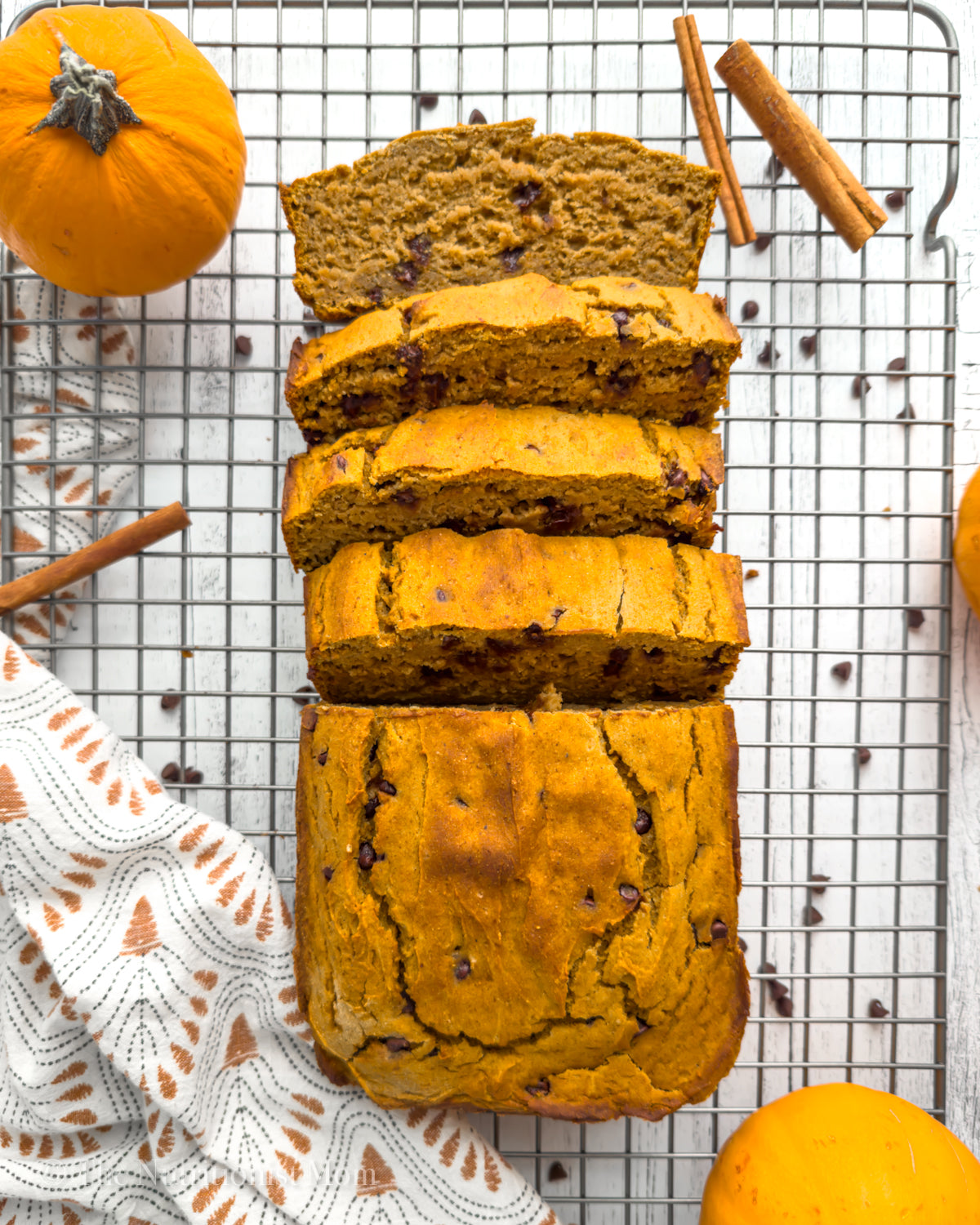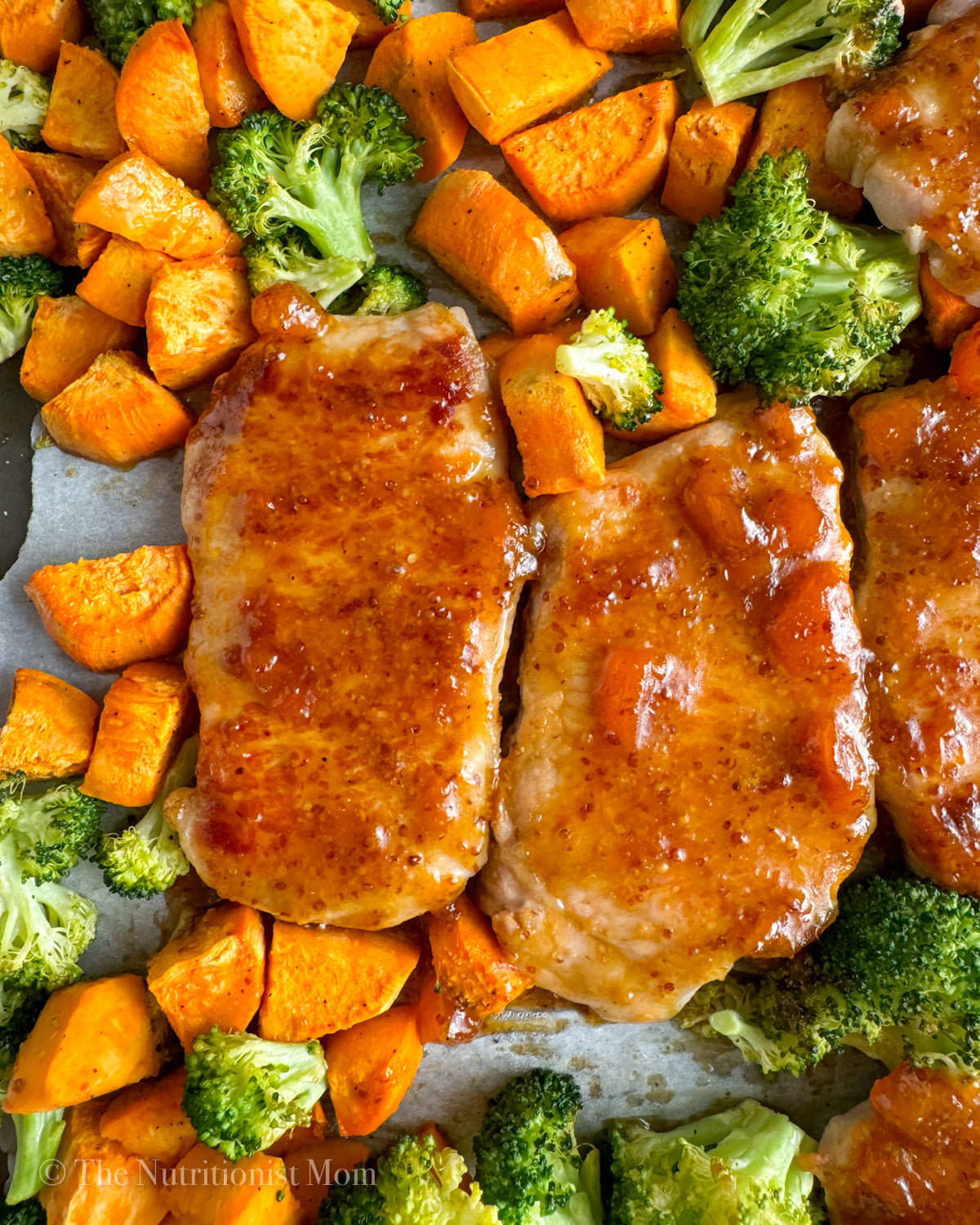10 SCIENCE-BACKED TIPS TO BLAST STUBBORN BELLY FAT

Google “stubborn belly fat” and you may be told to go low carb, take shots of apple cider vinegar, or use expensive wraps. You may even read that belly fat is no different from any other body fat, you just need a calorie deficit and exercise to burn it off. In reality, none of these claims are completely true.
First of all, there are two types of “belly fat”: subcutaneous and visceral.1 Subcutaneous is that pudge you can grab; visceral is the fat surrounding your organs, indicated by a firm, protruding gut. Although undesirable, subcutaneous fat is largely harmless.

Subcutaneous belly fat is stubborn because abdominal fat cells have fewer beta-receptors to receive fat burning signals (catecholamines) compared to fat stores in other areas.2 Frustrating, but the good news is that reducing overall body fat will eventually melt off your spare tire. It just may be the last to go!
Visceral fat, on the other hand, carries serious health risks. Visceral belly fat, unlike subcutaneous pudge, has a hormonal component that promotes inflammation and insulin resistance (the inability to metabolize carbs properly). This double-edged sword perpetuates metabolic syndrome: high blood pressure, high blood sugar, excess body fat around the waist, and abnormal cholesterol levels. In turn, metabolic syndrome paves the way to obesity, heart disease, stroke, and diabetes.
“Skinny” people can have excess visceral fat too if their lifestyle is unhealthy, putting them at risk for serious health issues. Overweight and obese people are more likely to have both subcutaneous and visceral belly fat. If you’re not overweight, but still have belly fat, these below tips will improve both your appearance and overall health! If you’re overweight, you need these tips along with a 20-30% calorie deficit for weight loss.
Check out this article to find out how many calories you need!
1. Eat More Healthy Fats
Too little healthy fats (along with too much of the unhealthy kind) can promote inflammation and insulin resistance. If you remember, inflammation and insulin resistance are the two main contributors to stubborn belly fat. Not to mention, metabolic syndrome, obesity, heart disease, stroke, and diabetes!
Two fats are essential for ditching belly fat: polyunsaturated omega-3 fats and monosaturated (omega-9) fats. Omega-3 fats reduce inflammation3 and promote insulin sensitivity,4 a one-two punch against belly fat. Omega-3 fats are found in salmon, sardines, mackerel, herring, ground flaxseed and flaxseed oil, chia seeds, walnuts and walnut oil, and high omega-3 canola oil. Monosaturated fats also promote insulin sensitivity,4 helping your body burn carbohydrates for energy rather than store them as fat. They’ve also been shown to reduce visceral fat.5 Sources of monosaturated fats include olive oil, avocados and avocado oil, almonds, macadamias and most other nuts, sesame seeds and pumpkin seeds.

Two fats you should avoid or at least limit are polyunsaturated omega-6 fats and trans fats. When consumed in excess, polyunsaturated omega-6 fats promote inflammation (which contributes to stubborn belly fat) plus various inflammatory diseases (metabolic syndrome, autoimmune disease, heart disease). Omega-6 fats are found in safflower, soybean, sunflower, grapeseed, corn and peanut oils. While “some” omega-6 is necessary for immune function, our modern culture gets way too much. The recommended ratio of omega-6 to omega-3 is 4:1 or less, but the average American gets closer to 16:1!
Trans fat is another unhealthy fat that has been directly linked to insulin resistance, stubborn belly fat, obesity and metabolic syndrome.6,7 Trans fat is found in processed foods containing “partially hydrogenated oils,” such as bakery items, snack foods, frozen pies and pizzas, fast food, margarine, shortening, and coffee creamer (check your nutrition label).

While saturated fat isn’t as bad for us as once claimed, health authorities like Harvard School of Health and the American Dietetic Association still agree that saturated fat should be limited to 10% or less of total calories. Too much saturated fat can promote insulin resistance, and in turn, excess belly fat.7 Sources of saturated fat include coconut oil, palm oil, butter, ghee, egg yolks, dairy products, and other animal fats (fatty cuts of beef and pork, chicken and turkey with the skin on, salami, pepperoni, bacon, sausage, hot dogs, liverwurst, bologna).
2. Scale Back Sugar Intake (Especially Fructose)
Getting most of your carbs from simple or added sugars (rather than whole grains, vegetables and fruit) could lead to a wider waist, research shows.8
Added sugar intake from fructose specifically has been linked to excess belly fat and obesity.9-11 In addition, high intakes of fructose can cause elevated blood lipids, high blood sugar, high blood pressure, insulin resistance, fatty liver, and inflammation.9 A recent controlled study showed that subjects who consumed 25% of calories from fructose-sweetened beverages like soda gained more abdominal weight and exhibited worse insulin sensitivity compared to subjects who consumed 25% of calories from glucose.12 Another study went as far as to say that for every fructose-sweetened beverage a child drinks per day, their risk of adult obesity goes up six times!13

Part of the issue is that fructose does not stimulate leptin (our appetite-suppressing hormone) or suppress ghrelin (our appetite-stimulating hormone) like glucose does! This makes it easier to overeat. The other issue is that excess fructose is metabolized differently than excess glucose, releasing inflammatory by-products, promoting insulin resistance, and encouraging fat accumulation, particularly stubborn belly fat.9
Fructose intake in the US has increased by 40% over the last 30 years (alongside the increase in obesity).9 Check your ingredient list for these hidden sources: high-fructose corn syrup, sucrose/table sugar/white sugar (only 5% less fructose than high-fructose corn syrup), caramel, invert sugar, agave, honey, molasses, and palm sugar. You’ll find these ingredients in sodas, salad dressings, condiments, syrups, jams and jellies, flavored coffee creamers and yogurts, commercial baked goods and breads, sweetened beverages like soda but also sports drinks, lemonade, and sweet teas, sugary cereals and cereal bars, packaged snacks and sweets, candy, pre-marinated meats… it’s everywhere! Even dried fruit and fruit juice are concentrated sources fructose.

So, how much fructose is okay? About 25-40 grams of fructose is associated with low rates of obesity, according to an article published in The American Journal of Clinical Nutrition.14 This amount would be the daily equivalent of 1/4 cup of honey, 2/3 cup of raisins, 3/4 cup of dates, 2 cups of orange juice, 4-5 medium pears, 5 large bananas, 7-8 medium apples, or 9 medium oranges (source: USDA Food Composition Database). As you can see, you can eat quite a bit of fruit without fattening your midsection, assuming calories are kept in check. It’s the soda and added sugars we have to limit (one 16-fluid-ounce soda has roughly 50 grams of sugar and 30 grams of fructose).
3. Limit Alcohol Intake
There’s a reason why they call it a “beer belly!” Alcohol suppresses fat burning and promotes visceral fat storage around the organs.15 In fact, those who have more than three drinks per day are 80% more likely to have excess belly fat.16
Don’t drink often but get drunk when you do? One study found that those who enjoy a standard “drink” or less on a daily basis had the least abdominal fat, while those who drank infrequently (less than weekly) but in large quantities (four drinks or more) had the most belly fat.17 In other words, it’s better to drink in moderation regularly than occasionally binge-drink!

While having a glass of red wine per day is beneficial to your health,18 drinking more could increase your waistline – not to mention, your risk for heart attack, diabetes, stroke, breast and colorectal cancer, and Alzheimer’s disease.
4. Exercise Regularly
Anything you can do to reduce time spent sitting in front of the TV will help reduce stubborn belly fat!19 However, research suggests that a combination of cardio and strength training (versus one or the other) is the best approach for reducing both subcutaneous and visceral fat.20,21
To maximize fat loss, you don’t have to trade heavy lifting for a ton of plyometrics and fast-paced circuits! In fact, one study showed similar post-exercise calorie burn comparing 40 minutes of circuit training (50% of 1RM x 15 repetitions x 4 sets) to 40 minutes of heavy resistance lifting (80-90% of 1RM x 3-8 repetitions x 3 sets).22

When it comes to targeting stubborn belly fat, high-intensity interval training (HIIT) doesn’t have any advantage over low-intensity steady state (LISS) cardio. However, HIIT does have the advantage of being more efficient. That is, you get a greater overall calorie burn from 15 minutes of HIIT than 15 minutes of LISS (thanks to excess post-exercise oxygen consumption).23
5. Eat Enough Protein
Studies show that those who consume a high-protein diet have less belly fat.8,24,25 Protein reduces stubborn belly fat for several reasons – for one, protein helps maintain and build lean muscle mass, and having more muscle mass increases metabolic rate.26
Second,protein directly increases metabolic rateduring digestion and absorption (thermic effect of food). It takes more calories to break down protein than any other macronutrient! For example, 20-35% of protein calories are lost to digestion and absorption, compared to only 5-15% of carbohydrate calories and 0-5% of fat calories.27

Third, protein suppresses appetite.28 Surely, you’ve noticed that you’re much fuller after a 200-calorie chicken breast than a 200-calorie snack size bag of chips.
Last but not least, consuming protein with a meal helps moderate blood sugar,29 which in turn, reduces the likelihood of developing insulin resistance, a main culprit for stubborn belly fat.30
These benefits can be seen within the range of 0.6-1.4 grams per pound (1.3-3.1g/kg) of bodyweight, or between 25-45% of total calories. Consuming more than this poses potential health risks with no additional health or muscle-building benefits.
6. Get More Fiber
There is a reason that higher intakes of whole grains, vegetables and fruits are associated with smaller waists,8 and that is fiber!
Soluble fiber specifically appears to diminish belly fat. In fact, for every 10 grams of soluble fiber consumed daily, researchers measured an almost 4% reduction in visceral abdominal fat.31 Oats, beans, Brussels sprouts, broccoli, sweet potatoes, pears, oranges, apples, and avocados are all good sources of soluble fiber.

On the other hand, diets low in fiber and high in refined carbs are linked to weight gain and increased visceral belly fat.32,33 This is not to say you should never have refined carbs, just don’t make them the bulk of your diet!
7. Foster Gut Health
More and more research is accumulating on gut bacteria and their influence on obesity, as well as overall health. Interestingly, your gut bacteria play a role in determining how many calories you get from the food you eat, as well as how those calories are metabolized and stored.34
There are clear distinctions between the gut flora of obese people and that of healthy individuals. For example, researchers find higher levels of the Firmicutes strain and nearly 90% less Bacteroidetes in obese populations. This trend of bacterial growth seems to be propagated by a Western diet high in fat and sugar.35
Luckily, diet can influence gut bacteria in as little as 24 hours! Switching to a high-fiber diet provides prebiotics to foster healthy bacteria.36 In addition, taking probiotics daily (like those found in kefir and Greek yogurt) has been shown to reduce visceral belly fat as much as 8.5% over the course of 12 weeks.37

Other great sources of probiotics for those that can’t handle dairy include sauerkraut, tempeh, kimchi, miso, kombucha, and pickles fermented in water and salt (not vinegar).
8. Stress Less
Cortisol, known as the “flight or fight” hormone, is a hormone released by the adrenals in response to stress. Cortisol has many positive actions in the body, such as fat burning, increasing focus, and suppressing inflammation.38
However, when cortisol is chronically elevated due to stress, it can create a cascade of negative effects in the body. These include elevated blood sugar (cortisol stimulates glucose release but suppresses insulin), insulin resistance (due to chronically elevated blood glucose), elevated blood triglycerides promoting cardiovascular disease, suppressed immune function, fertility issues (cortisol suppresses sex hormone production), fatigue, insomnia, chronic fatigue, dementia, depression, thyroid issues, and finally, weight gain… specifically abdominal weight gain! This is because visceral belly fat has more cortisol receptors than other fat stores.38,39
Many things cause stress and boost cortisol: excessive exercise (overtraining), excessive calorie restriction (<70% of maintenance calories), excessive caffeine or alcohol intake, sleep deprivation, an inflammatory diet high in unhealthy fats and added sugar (cortisol released in attempt to reduce inflammation), traumatic events, personal loss, even day-to-day challenges like traffic jams, work pressure, and family difficulties.38
Fortunately, our response to stress can be manipulated, both physically and emotionally.

Physically, we can take a balanced approach to diet and exercise rather than going to extremes. We can use exercise to release stress, give our bodies time to rest and recover when needed, fuel our bodies with adequate calories, limit alcohol and caffeine intake, and emphasize an anti-inflammatory diet (high in fruits, vegetables, fiber, and healthy fats).38
From an emotional approach, we can practice relaxation techniques (deep abdominal breathing, prayer, visualization, meditation, aromatherapy, massage). We can also find peace with things we cannot control, refuse to focus on things that do not foster happiness, choose a positive outlook, and maintain close relationships with family and friends for social support. These things are key to get rid of stubborn belly fat!
9. Get A Good Night’s Sleep
Sleep deprivation has been linked to weight gain, including subcutaneous belly fat and visceral belly fat.40-43 In one study, women who slept less than five hours gained more weight over a 16-year period than those who got seven hours or more.42 In another 6-year study, those who slept less than five hours or more than nine hours gained more belly fat than those who got seven to eight hours.43
Sleep deprivation not only increases cortisol levels, but also decreases leptin levels.41 Leptin is a hormone that suppresses appetite and increases calorie burn, so having low leptin levels sets you up to eat more and burn fewer calories.

Besides getting 7-8 hours of sleep, it’s important to get quality sleep. In one study, men suffering from sleep apnea were shown to have a higher visceral belly fat than those who did not have the condition.44 While studies are limited, it makes sense that other conditions affecting sleep quality might pose similar risks.
10. Rule Out Hormone Imbalance
If nothing else has worked, I would recommend seeing a doctor or naturopath that specializes in endocrinology to check for major hormone imbalances. Disproportionate abdominal fat is common with estrogen imbalance – for example, in polycystic ovarian syndrome (PCOS), menopause, and postpartum.45 Estrogen dominance increases subcutaneous fat gain, while low estrogen increases visceral belly fat. For men, low testosterone is a double whammy – promoting both subcutaneous and visceral belly fat storage (testosterone starts to decline after age 30).46Abnormalities in thyroid and adrenal hormone levels can also contribute to obesity, particularly stubborn belly fat.47,48
I hope you’ve found this article both informative and practical. If you have questions, feel free to leave a comment below!
No part of this article may be reproduced, copied, modified or adapted, without written permission from Sarah Wilkins. Violation is subject to prosecution by copyright law, and punishable by up to 5 years in Federal prison and a fine up to $250,000.
Sources:
- Harvard Health Publishing. “Abdominal Fat and What to Do about It.” Harvard Health Blog, Harvard Health Publishing, 9 Oct. 2015, www.health.harvard.edu/staying-healthy/abdominal-fat-and-what-to-do-about-it.
- Galitzky, J et al. “Role of vascular alpha-2 adrenoceptors in regulating lipid mobilization from human adipose tissue” Journal of clinical investigation vol. 91,5 (1993): 1997-2003.
- Riccardi, G., R. Giacco, and A.a Rivellese. “Dietary Fat, Insulin Sensitivity and the Metabolic Syndrome.” Clinical Nutrition 23.4 (2004): 447-56. Web. 1 Aug. 2016.
- “Omega-3 Fatty Acids.” University of Maryland Medical Center. N.p., 5 Aug. 2015. Web. 02 Aug. 2016.
- Kaippert, Vanessa Chaia et al. “Effects of unsaturated fatty acids on weight loss, body composition and obesity related biomarkers” Diabetology & Metabolic Syndrome vol. 7, Suppl 1 A139. 11 Nov. 2015, doi:10.1186/1758-5996-7-S1-A139
- Simopoulos, A.p. “Importance of the Ratio of Omega-6/Omega-3 Essential Fatty Acids: Evolutionary Aspects.” World Review of Nutrition and Dietetics Omega-6/Omega-3 Essential Fatty Acid Ratio: The Scientific Evidence, 2003, pp. 1–22., doi:10.1159/000073788.
- Krishnan, Sridevi, and Jamie A. Cooper. “Effect of Dietary Fatty Acid Composition on Substrate Utilization and Body Weight Maintenance in Humans.” European Journal of Nutrition Eur J Nutr 53.3 (2013): 691-710. Web. 1 Aug. 2016.
- Jytte Halkjær, Anne Tjønneland, Birthe L Thomsen, Kim Overvad, Thorkild IA Sørensen; Intake of macronutrients as predictors of 5-y changes in waist circumference, The American Journal of Clinical Nutrition, Volume 84, Issue 4, 1 October 2006, Pages 789–797, https://doi.org/10.1093/ajcn/84.4.789
- Pereira, Rodrigo Martins et al. “Fructose Consumption in the Development of Obesity and the Effects of Different Protocols of Physical Exercise on the Hepatic Metabolism” Nutrients vol. 9,4 405. 20 Apr. 2017, doi:10.3390/nu9040405
- Pollock, Norman K et al. “Greater fructose consumption is associated with cardiometabolic risk markers and visceral adiposity in adolescents” Journal of nutrition vol. 142,2 (2011): 251-7.
- Malik, Vasanti S and Frank B Hu. “Fructose and Cardiometabolic Health: What the Evidence From Sugar-Sweetened Beverages Tells Us” Journal of the American College of Cardiology vol. 66,14 (2015): 1615-1624.
- Stanhope, Kimber L and Peter J Havel. “Fructose consumption: considerations for future research on its effects on adipose distribution, lipid metabolism, and insulin sensitivity in humans” Journal of nutrition vol. 139,6 (2009): 1236S-1241S.
- Ludwig D.S., Peterson K.E., Gortmaker S.L. Relation between consumption of sugar-sweetened drinks and childhood obesity: A prospective, observational analysis. Lancet. 2001;357:505–508. doi: 10.1016/S0140-6736(00)04041-1.
- Laura Gabriela Sánchez-Lozada, MyPhuong Le, Mark Segal, Richard J Johnson; How safe is fructose for persons with or without diabetes?, The American Journal of Clinical Nutrition, Volume 88, Issue 5, 1 November 2008, Pages 1189–1190, https://doi.org/10.3945/ajcn.2008.26812
- Paolo M. Suter & Angelo Tremblay (2005) Is Alcohol Consumption A Risk Factor For Weight Gain And Obesity? Critical Reviews in Clinical Laboratory Sciences, 42:3, 197-227, DOI: 10.1080/10408360590913542
- Schröder, H., Morales-Molina, J.A., Bermejo, S. et al. Eur J Nutr (2007) 46: 369. https://doi.org/10.1007/s00394-007-0674-7
- Joan M. Dorn, Kathleen Hovey, Paola Muti, Jo L. Freudenheim, Marcia Russell, Thomas H. Nochajski, Maurizio Trevisan; Alcohol Drinking Patterns Differentially Affect Central Adiposity as Measured by Abdominal Height in Women and Men, The Journal of Nutrition, Volume 133, Issue 8, 1 August 2003, Pages 2655–2662, https://doi.org/10.1093/jn/133.8.2655
- Saleem, T S Mohamed and S Darbar Basha. “Red wine: A drink to your heart” Journal of cardiovascular disease research vol. 1,4 (2010): 171-6.
- Verity J Cleland, Michael D Schmidt, Terence Dwyer, Alison J Venn; Television viewing and abdominal obesity in young adults: is the association mediated by food and beverage consumption during viewing time or reduced leisure-time physical activity?, The American Journal of Clinical Nutrition, Volume 87, Issue 5, 1 May 2008, Pages 1148–1155, https://doi.org/10.1093/ajcn/87.5.1148
- Park, Sang-Kab, et al. “The Effect of Combined Aerobic and Resistance Exercise Training on Abdominal Fat in Obese Middle-Aged Women.” Journal of PHYSIOLOGICAL ANTHROPOLOGY and Applied Human Science, vol. 22, no. 3, 2003, pp. 129–135., doi:10.2114/jpa.22.129.
- Dâmaso, Ana Raimunda, et al. “Aerobic plus Resistance Training Was More Effective in Improving the Visceral Adiposity, Metabolic Profile and Inflammatory Markers than Aerobic Training in Obese Adolescents.” Journal of Sports Sciences, 2014, pp. 1–11., doi:10.1080/02640414.2014.900692.
- Elliot, Diane & Goldberg, Linn & Kuehl, Kerry. (1992). Effect of Resistance Training on Excess Post-exercise Oxygen Consumption. The Journal of Strength & Conditioning Research. 6. 10.1519/1533-4287(1992)006<0077:EORTOE>2.3.CO;2.
- Zhang, Haifeng et al. “Comparable Effects of High-Intensity Interval Training and Prolonged Continuous Exercise Training on Abdominal Visceral Fat Reduction in Obese Young Women” Journal of diabetes research vol. 2017 (2017): 5071740.
- Loenneke, Jeremy P et al. “Quality protein intake is inversely related with abdominal fat” Nutrition & metabolism vol. 9,1 5. 27 Jan. 2012, doi:10.1186/1743-7075-9-5
- SHARE and SHARE-AP Investigators; Protein Intake Is Inversely Associated with Abdominal Obesity in a Multi-Ethnic Population, The Journal of Nutrition, Volume 135, Issue 5, 1 May 2005, Pages 1196–1201, https://doi.org/10.1093/jn/135.5.1196
- Wang, Z., S. Heshka, K. Zhang, C. N., Boozer, and S. B. Heymsfield. “Resting Energy Expenditure: Systematic Organization and Critique of Prediction Methods.” National Center for Biotechnology Information. U.S. National Library of Medicine, May 2001. Web. 16 July 2016.
- Roussell, Mike, Ph.D. “Ask The Macro Manager: What Is The Thermic Effect Of Food?” Bodybuilding.com. N.p., 6 Feb. 2014. Web. 16 July 2016.
- Weigle, D. S., P. A. Breen, C. C. Matthys, H. S. Callahan, K. E. Meeuws, V. R. Burden, and J. Q. Purnell. “A High-protein Diet Induces Sustained Reductions in Appetite, Ad Libitum Caloric Intake, and Body Weight despite Compensatory Changes in Diurnal Plasma Leptin and Ghrelin Concentrations.” National Center for Biotechnology Information. U.S. National Library of Medicine, July 2005. Web. 16 July 2016.
- Westerterp-Plantenga, M. S., A. Nieuwenhuizen, D. Tomé, S. Soenen, and K. R. Westerterp. “Dietary Protein, Weight Loss, and Weight Maintenance.” National Center for Biotechnology Information. U.S. National Library of Medicine, 2009. Web. 16 July 2016.
- Arentson-Lantz, E., S. Claremont, D. Paddon-Jones, A. Tremblay, and R. Elango. “Protein: A Nutrient in Focus.” National Center for Biotechnology Information. U.S. National Library of Medicine, Aug. 2015. Web. 16 July 2016.
- Hairston, Kristen G et al. “Lifestyle factors and 5-year abdominal fat accumulation in a minority cohort: the IRAS Family Study” Obesity (Silver Spring, Md.) vol. 20,2 (2011): 421-7.
- López-Alarcón, Mardia et al. “Excessive refined carbohydrates and scarce micronutrients intakes increase inflammatory mediators and insulin resistance in prepubertal and pubertal obese children independently of obesity” Mediators of inflammation vol. 2014 (2014): 849031.
- McKeown, Nicola M et al. “Whole- and refined-grain intakes are differentially associated with abdominal visceral and subcutaneous adiposity in healthy adults: the Framingham Heart Study” American journal of clinical nutrition vol. 92,5 (2010): 1165-71.
- Davis, Cindy D. “The Gut Microbiome and Its Role in Obesity” Nutrition todayvol. 51,4 (2016): 167-174.
- Duncan SH, Lobley GE, Holtrop G, et al. Human colonic microbiota associated with diet, obesity and weight loss. Int. J. Obes. 2008;32:1720–1724.
- Wu GD, Chen J, Hoffmann C, et al. Linking long-term dietary patterns with gut microbial enterotypes. Science. 2011;334:105–108.
- Kadooka Y, Sato M, Ogawa A, et al. Effect of Lactobacillus gasseri SBT2055 in fermented milk on abdominal adiposity in adults in a randomized controlled trial. Br. J. Nutr. 2013;110:1696–1703.
- “Cortisol – Its Role in Stress, Inflammation, and Indications for Diet Therapy.” Today’s Dietitian, www.todaysdietitian.com/newarchives/111609p38.shtml.
- Warne, James P. “Shaping the Stress Response: Interplay of Palatable Food Choices, Glucocorticoids, Insulin and Abdominal Obesity.” Molecular and Cellular Endocrinology, vol. 300, no. 1-2, 2009, pp. 137–146., doi:10.1016/j.mce.2008.09.036.
- Esther López-García, Raquel Faubel, Luz León-Muñoz, María C Zuluaga, José R Banegas, Fernando Rodríguez-Artalejo; Sleep duration, general and abdominal obesity, and weight change among the older adult population of Spain, The American Journal of Clinical Nutrition, Volume 87, Issue 2, 1 February 2008, Pages 310–316, https://doi.org/10.1093/ajcn/87.2.310
- Beccuti, Guglielmo and Silvana Pannain. “Sleep and obesity” Current opinion in clinical nutrition and metabolic care vol. 14,4 (2011): 402-12.
- Patel, Sanjay R et al. “Association between reduced sleep and weight gain in women” American journal of epidemiology vol. 164,10 (2006): 947-54.
- Chaput, J. , Bouchard, C. and Tremblay, A. (2014), Change in sleep duration and visceral fat accumulation over 6 years in adults. Obesity, 22: E9-E12. doi:10.1002/oby.20701
- Alexandros N. Vgontzas, Dimitris A. Papanicolaou, Edward O. Bixler, Kenneth Hopper, Angela Lotsikas, Huong-Mo Lin, Anthony Kales, George P. Chrousos; Sleep Apnea and Daytime Sleepiness and Fatigue: Relation to Visceral Obesity, Insulin Resistance, and Hypercytokinemia, The Journal of Clinical Endocrinology & Metabolism, Volume 85, Issue 3, 1 March 2000, Pages 1151–1158, https://doi.org/10.1210/jcem.85.3.6484
- Brown, L M and D J Clegg. “Central effects of estradiol in the regulation of food intake, body weight, and adiposity” Journal of steroid biochemistry and molecular biology vol. 122,1-3 (2009): 65-73.
- Wang, Christina et al. “Low testosterone associated with obesity and the metabolic syndrome contributes to sexual dysfunction and cardiovascular disease risk in men with type 2 diabetes” Diabetes care vol. 34,7 (2011): 1669-75.
- Bandurska-Stankiewicz, Elżbieta. “Thyroid Hormones – Obesity and Metabolic Syndrome.” Thyroid Research, vol. 6, no. Suppl 2, 2013, doi:10.1186/1756-6614-6-s2-a5.
- Lucassen, Eliane A and Giovanni Cizza. “The Hypothalamic-Pituitary-Adrenal Axis, Obesity, and Chronic Stress Exposure: Sleep and the HPA Axis in Obesity” Current obesity reports vol. 1,4 (2012): 208-215.
Also in Blog

CHOCOLATE PEANUT PROTEIN CANDY BARS (VEGAN)

PUMPKIN CHIP PROTEIN BREAD (GLUTEN FREE, DAIRY FREE)
This Pumpkin Chip Protein Bread has a rich, tender texture full of pumpkin spice and chocolate chips (no dry protein bread here). The kids and I can't get enough! Best of all, it's gluten-free, dairy-free, nut-free and easily made egg-free and vegan.



